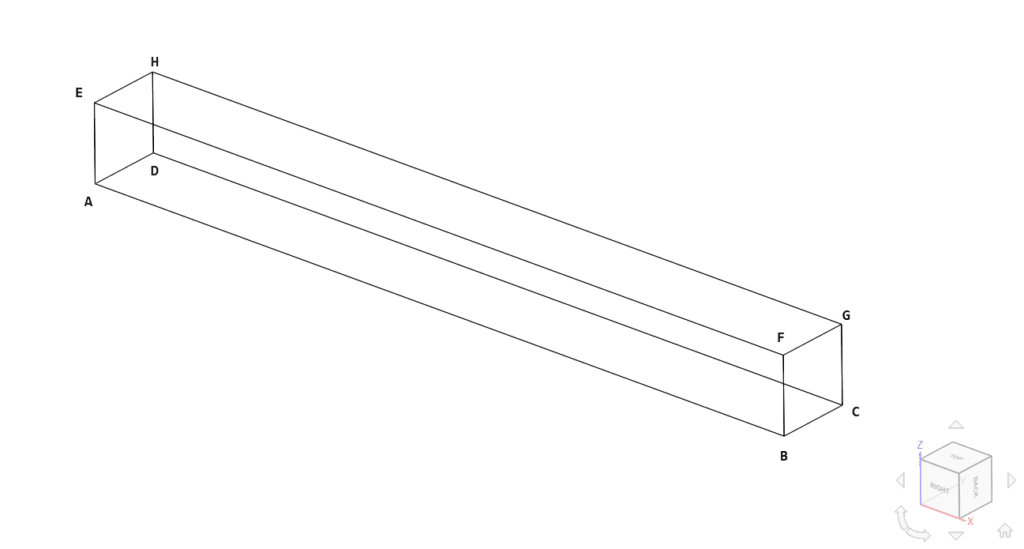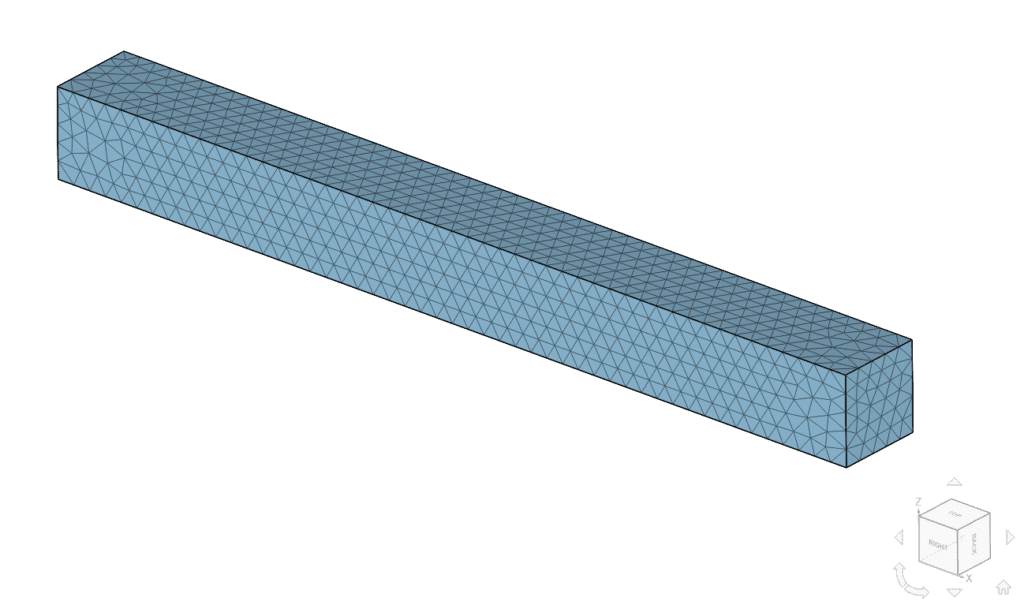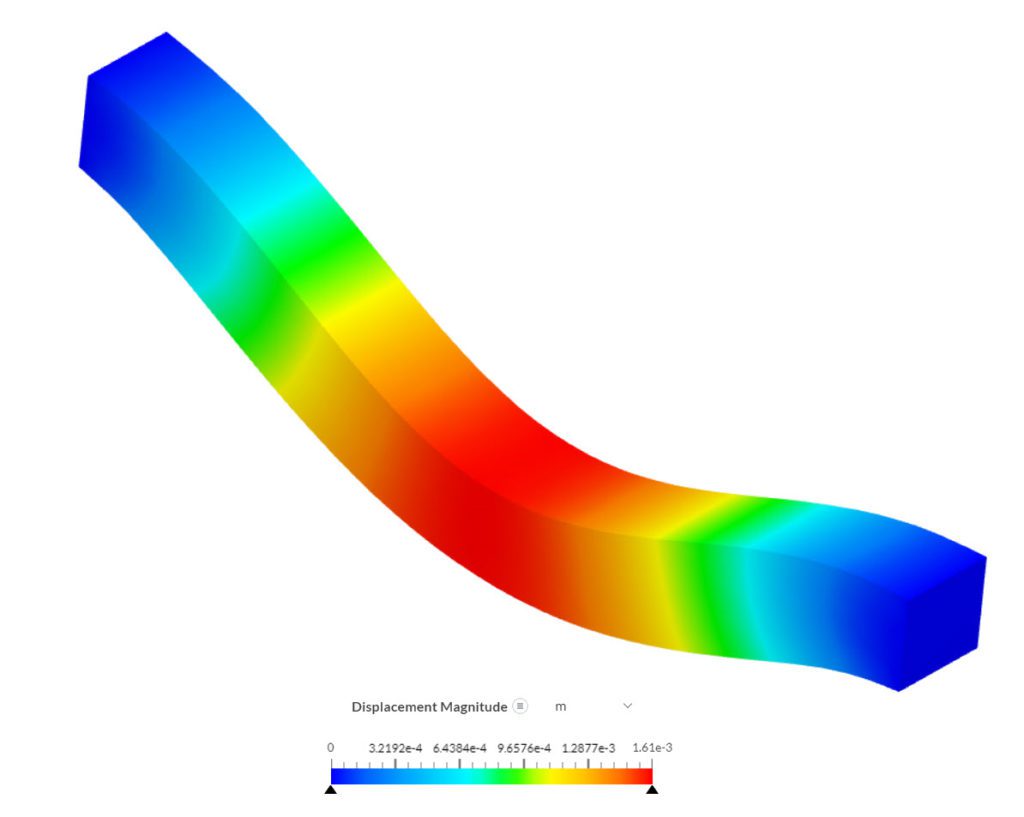Documentation
This validation case belongs to the material damping of the Rayleigh model in solid mechanics. The aim of this test case is to validate the following parameters on the middle point of the beam:
The simulation results from SimScale were compared to the Europlexus and Code Aster results presented in [SDLS123]\(^1\).
The geometry used for the case is as follows:

The beam has a length of 10 \(m\) and a square cross-section with a side length of 1 \(m\). The coordinates of each point can be found in the following table:
| POINT | X \([m]\) | Y \([m]\) | Z \([m]\) |
|---|---|---|---|
| A | 0 | 0 | 0 |
| B | 10 | 0 | 0 |
| C | 10 | 1 | 0 |
| D | 0 | 1 | 0 |
| E | 0 | 0 | 1 |
| F | 10 | 0 | 1 |
| G | 10 | 1 | 1 |
| H | 0 | 1 | 1 |
Tool Type: Code Aster
Analysis Type: Dynamic
Mesh and Element Types:
Tetrahedral meshes were computed using SimScale’s Standard mesh algorithm and manual sizing:
| Case | Mesh Type | Number of Nodes | Element Type | Element Technology |
|---|---|---|---|---|
| A | Standard | 1173 | 1st order tetrahedral | Standard |
| B | Standard | 7481 | 2nd order tetrahedral | Standard |

Material:
Boundary Conditions:
The reference solution is of numerical type as presented in cases A and B of [SDLS123]\(^1\). The Europlexus and Code Aster results for the same linear triangular mesh were used for the comparison.
Comparison of the displacement (DZ), velocity (VZ), and acceleration (AZ) computed on the midpoint of the beam for cases A and B.
The results produced are in good agreement with the reference. Higher deviations are blamed on the nature of linear tetrahedral elements.
Following is a deformed shape of the beam for case A at time \(t = \) 0.012 \(s\):

Note
If you still encounter problems validating you simulation, then please post the issue on our forum or contact us.
Last updated: September 28th, 2021
We appreciate and value your feedback.
Sign up for SimScale
and start simulating now